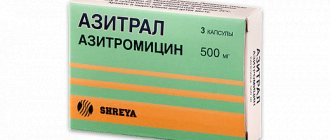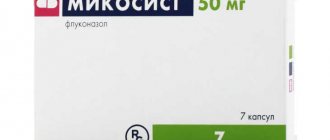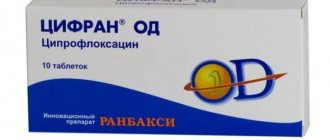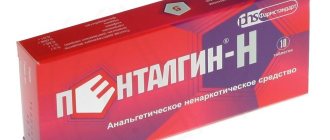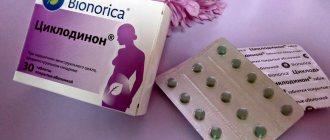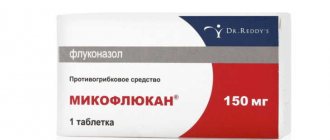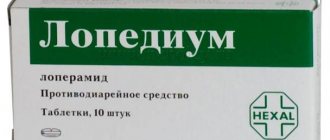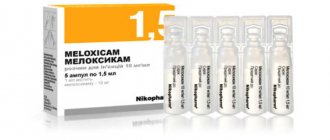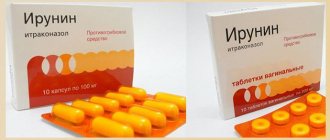The Pentaxim vaccine is a polyvalent drug that has been widely used during the immunization of children against 5 dangerous diseases in Russia since 2008. Pentaxim allows you to replace such drugs as the DTP vaccine, vaccine preparations against polio and Hib infections. But many parents are interested in how to avoid side effects during immunization. How effective and safe is Pentaxim? It is worth considering these issues more carefully.
Compound
As part of the Pentaxim vaccine, which is available in the form of a suspension: toxoids (toxoids) of diphtheria (Diphtheria), tetanus (Tetanus) and whooping cough (Pertussis) are present in a concentration of ≥ 30 IU/≥40 IU/25 μg/dose, respectively.
The concentration of filamentous hemagglutinin in one dose is 25 mcg of Filamentous hemagglutinin. The concentration of inactivated polio type 1-3 in ELISA units is, respectively, 40, 8 and 32 IU*.
The absorption and effect of the active components are optimized by the excipients included in Pentaxim: formaldehyde , aluminum hydroxide, Hanks medium 199*, sodium hydroxide or acetic acid, phenoxyethanol , water d/i.
*The suspension does not contain phenol red.
The vaccine for the prevention of diseases caused by HIB contains HIB polysaccharide conjugated with tetanus toxoid at a concentration of 10 μg/dose, as well as trometamol and sucrose.
Release form
Pentaxim vaccine for immunization against diphtheria (Diphtheria) and tetanus (Tetanus), adsorbed, pertussis (Pertussis), acellular, and polio (Poliomyelitis), inactivated, is a cloudy, whitish suspension. Intended for intramuscular administration, it is available in 0.5 ml doses in 1 ml glass syringes (the syringe can come with or without a fixed needle).
The vaccine for the prevention of diseases caused by HIB is a homogeneous, white, lyophilized mass for the preparation of a suspension for intramuscular administration. Available in glass bottles, 1 dose per bottle.
Each cardboard package is equipped with one bottle of lyophilisate and one glass syringe with a suspension, placed in a closed cell packaging.
In the case when the syringe comes without a needle, the delivery set additionally includes 2 separate sterile needles, sealed in cell packaging.
Video “DTP vaccination – Dr. Komarovsky’s School”
Video from the Doctor Komarovsky channel about the DTP vaccination, an analogue of the Pentaxim vaccine.
Do you have any questions? Specialists and readers of the KROHABABY website will help you ask a question
Was this article helpful?
Thank you for your opinion!
The article was useful. Please share the information with your friends.
Yes (100.00%)
No
X
Please write what is wrong and leave recommendations on the article
Cancel reply
Rate the benefit of the article: Rate the author ( 3 votes, average: 5.00 out of 5)
Discuss the article:
Pharmacodynamics and pharmacokinetics
The Pentaxim vaccination is designed to vaccinate children against tetanus (Tetanus), diphtheria (Diphtheria), polio (Poliomyelitis), whooping cough (Pertussis) and diseases caused by Haemophilus influenzae (including against septicemia , meningitis , epiglotitis , pneumonia , etc.) . If the timing of revaccination is observed, the vaccinated child develops lasting immunity to these diseases.
The manufacturer of Pentaxim did not provide data regarding the pharmacokinetics of the drug.
Pentaxim is well tolerated and is recommended for use in children over three months of age.
It must be taken into account that the drug does not contribute to the formation of immunity against diseases caused by other serotypes of Haemophilus influenzae (A, C, D, E and F) , as well as immunity to meningitis provoked by other pathogenic microflora .
Indications for use: Pentaxim vaccination - what is it for?
Pentaxim is used for the prevention in children from 3 months to 47 months 29 days of tetanus (Tetanus), diphtheria (Diphtheria), poliomyelitis (Poliomyelitis), whooping cough (Pertussis) and invasive infections caused by HIB (including meningitis and septicemia ).
The drug can be used for primary vaccination of children over one year of age for the prevention of tetanus (Tetanus), diphtheria (Diphtheria), polio (Poliomyelitis), whooping cough (Pertussis) and invasive infections caused by HIB. If a child older than 12 months has not previously been vaccinated against these diseases, it is recommended to administer Pentaxim suspension exclusively.
Also, using Pentaxim, it is possible to vaccinate and revaccinate children who have previously been immunized with several doses of whole-cell or acellular vaccine against tetanus (Tetanus), diphtheria (Diphtheria) and whooping cough (Pertussis), subject to ongoing vaccination/booster vaccination against polio .
Distinctive features
Increasingly, parents are choosing Pentaxim to protect their children from diseases. The composition of the vaccine and reviews contribute to this decision. The name fully corresponds to its purpose and the substances included in it. The solution is designed to prevent the development of five different diseases, from which many children previously died.
Channel PROGRAMMER'S DIARY
The life of a programmer and interesting reviews of everything. Subscribe so you don't miss new videos.
The drug itself is supplied in disposable syringes, which are accompanied by a bottle containing lyophilisate. Experts explain why such a separation is necessary. If the baby is absolutely healthy, then simultaneous vaccination against five diseases is possible. But often young patients have some kind of disorder, and then the vaccination schedule may differ.
Most often, an injection is first given only against four pathologies, excluding hemophilus influenzae infection. Only after stable immunity has been established and examination by doctors is further vaccination carried out. This practice is intended to alleviate the condition of children after vaccination and prevent serious complications from developing.
Contraindications
Contraindications to the administration of the Pentaxim vaccine are:
- known hypersensitivity to the components of the drug, as well as streptomycin , polymyxin B , glutaraldehyde , neomycin .
- Progressive organic brain lesions (including those accompanied by seizures).
- Organic brain lesions that developed within 7 days after administration of a vaccine containing (Bordetella pertussis) antigens
- History of a strong reaction to administration of a vaccine containing a pertussis component The reaction is associated with vaccination if it occurs within 48 hours of injection. As a rule, it is expressed in the form of increased body temperature, febrile and afebrile convulsions , prolonged unusual crying syndrome, decreased muscle tone with simultaneous neurological pathology .
- History of allergic reactions to vaccination against tetanus (Tetanus), diphtheria (Diphtheria), polio (Poliomyelitis), whooping cough (Pertussis) and invasive infections caused by HIB.
- Acute infectious diseases , diseases that are accompanied by hyperthermia , as well as aggravated chronic diseases (in these cases, the child should be vaccinated only after a period of remission of the chronic disease or complete recovery).
It is recommended to vaccinate with Pentaxim with caution:
- children who have previously experienced generalized seizures against a background of high (more than 38.5°C) temperature. The condition of such patients is carefully monitored for 48 hours after administration of the drug, and in the event of an increase in body temperature, they are prescribed to take antipyretics of hyperthermia .
- Children with a history of hypersensitivity reactions to any vaccine. In addition, the doctor should be informed by the parents of any of allergic reactions to vaccines.
- Children with hemocoagulation (for example, thrombocytopenia ), since intramuscular injection in them is associated with a high risk of bleeding.
In patients who are being treated with immunosuppressants , as well as in patients with impaired immunological reactivity, the response to the Pentaxim vaccine may be reduced.
If the patient has a history of indicating the development of acute polyradiculitis or plexitis in response to vaccination with drugs that contain a tetanus component , the physician should carefully weigh the benefits and potential risks of immunization with Pentaxim. In such cases, completion of primary immunization is usually considered justified.
Side effects
The administration of Pentaxim can cause side effects of both local and systemic nature.
The most common local reactions: redness, soreness (usually expressed by short-term crying at rest or after lightly pressing the skin at the injection site) and the appearance of a lump at the injection site (in approximately 0.1-1% of cases, the diameter of the lump after vaccination exceeds 5 cm). The described side effects may develop within 48 hours after the injection.
Systemic reactions to vaccination in a child are expressed in the form of: hyperthermia (in 1-10% of cases the child’s body temperature exceeds 38°C, in 0.1-1% of cases it is more than 39°C, in 0.01-0.1% of cases - more than 40°C), drowsiness, irritability, anorexia, sleep disturbances, vomiting, diarrhea, prolonged crying.
Extremely rare side effects of the Pentaxim vaccine are skin rashes, urticaria , hypotension , febrile/afebrile convulsions , anaphylactoid-type reactions (shock, Quincke's edema) , hypotonic-hyporeactive episode .
Sometimes the administration of a vaccine that contains a HIB component is accompanied by cases of swelling of the lower extremities (one or both at the same time, with the limb on the side where the drug was administered swelling much more).
Swelling is observed mainly in the first few hours after primary vaccination. In some cases, reactions of this type occur with hyperthermia , prolonged crying, pain, changes in skin color (including the appearance of a bluish color), petechiae , redness of the skin, transient purpura , and rash are observed somewhat less frequently.
The described symptoms were not associated with any adverse events from the respiratory system or heart and disappeared spontaneously within 24 hours without any residual effects.
In very rare cases, the presence of an acellular pertussis component provoked severe reactions at the injection site (more than 5 cm in diameter), including tissue swelling extending to one or both joints at the same time.
These reactions appeared 24-72 hours after vaccination and were sometimes accompanied by local hyperthermia (at the injection site), pain or sensitivity, and redness of the skin.
Side effects disappear within 3-5 days and do not require special treatment.
Presumably, the likelihood of their development depends on the number of administrations of the acellular pertussis component (that is, the risk of their occurrence increases significantly after the fourth and fifth doses of such a vaccine).
There is evidence that the administration of other vaccines containing tetanus toxoid was accompanied by brachial neuritis and acute polyradiculitis .
You should inform your doctor about all adverse reactions to the administration of Pentaxim (including those not listed in the instructions).
How to avoid the negative consequences of vaccination?
Dr. Komarovsky notes that with revaccination there is a tendency to increase the incidence of general disorders and disorders.
Therefore, if a child had mild side effects from the first vaccination, then after the second or third injection his condition may worsen significantly. Therefore, it is important for parents to understand how to prevent the development of unwanted symptoms after immunization.
Measures to prevent negative consequences of vaccination:
- Do not bathe the baby until the wound formed during the injection heals and the condition returns to normal. If you wet the puncture area, infection will get there and severe inflammation will occur. Taking a shower at elevated temperatures can cause your child to catch a cold. In these cases, all protective forces will be aimed at fighting the disease, and not at forming specific immunity;
- do not walk with your child in crowded places. It is important to avoid contact with other children and adults to reduce the chance of infection. During the post-vaccination period, the body weakens and you can get sick. It is better that the child does not attend kindergarten, school, or communicate with friends for a couple of days;
- Do not allow the child to rub or scratch the area where the injection was given. It is prohibited to treat the injection site with ointments or lotions in order to speed up healing. This may cause allergies;
- if the baby is breastfed, then the mother should not introduce new foods into her diet;
- to prevent fever, some pediatricians advise giving the baby an antipyretic for several days after vaccination;
- Sensitive children are advised to take antihistamines three days before and after the procedure.
Vaccine Pentaxim: instructions for use
The drug is intended for intramuscular administration. It is prohibited to administer the vaccine subcutaneously or intravenously.
Single dose - 0.5 ml. The injection is made into the middle third of the anterolateral thigh. Before injecting the suspension, you must make sure that the needle does not enter a blood vessel.
If you are using a package that comes with two separate sterile needles, the needle must be tightly secured by turning it ¼ turn relative to the syringe before preparing the vaccine.
To prepare the vaccine, you must first remove the plastic colored cap from the bottle, then completely introduce the suspension for intramuscular administration through a needle from a syringe into a bottle with lyophilized mass (vaccine for the prevention of HIB infections).
Without removing the syringe, shake the bottle and wait until the lyophilized mass is completely dissolved (no more than 3 minutes). The resulting suspension is cloudy and has a whitish tint. If the substance has changed color or contains foreign impurities, it is prohibited to use it.
The finished vaccine is completely drawn into the same syringe and immediately administered to the child.
The instructions for Pentaxim indicate that the course of immunization with the drug involves administering 3 doses of the vaccine to the child with an interval of 30-60 days. Vaccination begins when the baby reaches three months of age, revaccination is carried out by administering one dose of the drug at the age of 18 months.
If the vaccination schedule is violated, the intervals between administration of the second and third doses of the drug do not change, as does the interval before the revaccination dose (it is 12 months).
If vaccination begins at the age of six months to a year, the second dose is administered 1.5 months after the first, and as a third dose, which is administered 1.5 months after the second, it is necessary to use a suspension for the prevention of tetanus , polio , whooping cough and diphtheria . originally presented in a syringe (that is, there is no need to dilute the lyophilized mass in a bottle).
For revaccination in this case, the usual dose of the drug Pentaxim is used with a dilution of the lyophilisate with the polysaccharide HIB conjugated to tetanus toxoid .
If the first vaccination is given to a child older than 12 months, then for each subsequent dose (including revaccination), a suspension is used to prevent tetanus , polio , whooping cough and diphtheria , initially presented in a syringe (without diluting the lyophilized mass in a vial (HIB)).
- 1st vaccination - the full drug with the HIB component is administered;
- The 2nd vaccination is carried out 1.5 months after the first vaccination - the full drug with the HIB component is administered;
- The 3rd vaccination is carried out up to six months after the first vaccination - the full drug with the HIB component is administered, if later - only a suspension from a syringe is administered, without diluting the lyophilisate (HIB);
- revaccination is carried out up to a year after the first vaccination - the full drug with the HIB component is administered, after a year - only a suspension from a syringe is administered, without diluting the lyophilisate (HIB).
In all cases of violation of the child’s immunization schedule, the doctor’s actions must be regulated by the appropriate vaccination calendar.
special instructions
To prevent possible adverse reactions (including hypersensitivity reactions), the doctor must assess the child’s health and medical history, check the medical history of his immediate family (including allergy) and immunization history, and clarify cases of side effects after previous immunization.
When conducting vaccinations, the doctor is required to have tools and medications that may be necessary in the event of an allergic reaction .
For children taking immunosuppressants , vaccination should be postponed until the end of treatment or remission of the disease. for parents of children with chronic immunodeficiency , even though the immune system may be weak.
Post-vaccination period and features of care for the injection site
The most important period after vaccination is the first two days. It is at this time that any adverse reactions may occur. Therefore, it is very important to monitor the baby’s condition and at least regularly measure his body temperature. In addition, it is worth protecting your baby from drafts, hypothermia and other risk factors for developing the simplest acute respiratory infections.
If you introduce complementary foods, you should not add new foods at this time; it is better to give your baby proven foods that he will easily digest. Don't forget about drinking plenty of fluids. The injection site does not need to be treated with anything. Just try to prevent your child from scratching it. It is better to dress the baby in clothes made from natural, breathable fabrics.
Analogs
Level 4 ATX code matches:
Tetraxim
Infanrix Hexa
Infanrix
The same pharmacological group with the Pentaxim vaccine includes the drugs Bubo-Kok , Bubo-M , DTP vaccine , DTP-M , DPT-Hep-B vaccine , Infanrix , Infanrix Hexa , Tetraxim , Infanrix Penta .
DTP or Pentaxim - which is better?
The drug Pentaxim contains antigens of tetanus and diphtheria toxoids , components of the cell walls of Bordetella pertussis (the causative agent of whooping cough ), inactivated polio virus types 1-3 and capsular polysaccharides HIB (Haemophilus influenzae serotype b).
The main difference between Pentaxim and the whole-cell DTP vaccine is the method of its preparation, due to which the vaccine is characterized by lower reactogenicity in comparison with its analogue.
Which is better - DTP or Pentaxim?
To this question, doctor Komarovsky E.O. answers that the acellular pertussis component of the Pentaxim vaccine allows the baby to more easily endure the post-vaccination period, while the child suffers much less often from pain at the injection site and fever.
Another “advantage” of Pentaxim is that this vaccine makes it possible to immunize a child against 5 diseases in 4 injections.
Pentaxim or Infanrix - which is better?
Which is better - Pentaxim or Infanrix ? Which is better Pentaxim or Infanrix Hexa ? Such questions worry almost all young parents who are faced with vaccination for the first time.
Most often, doctors suggest vaccinating a child with DTP , or Pentaxim, or Infanrix. These preparations differ from each other in the number of components and the degree of their purification.
The DTP vaccine allows a child to develop immunity to whooping cough , tetanus and diphtheria (it contains a suspension of dead microbes Bordetella pertussis, as well as purified tetanus and pertussis toxoids ). The DTP-Hep-B vaccine is a four-component drug that promotes the development of immunity to whooping cough , tetanus , diphtheria and hepatitis B.
The Infanrix vaccine comes in three-, four-, five- and six-component versions: the Infanrix three-component suspension is used to prevent diphtheria , whooping cough and tetanus ; the four-component suspension Infanrix IPV allows the child to additionally develop immunity to polio ; The five-component Infanrix Penta is used to prevent 3 of these diseases, polio and hepatitis B ; Infanrix Hexa - for the prevention of 3 specified diseases, polio, hepatitis B and HIB infections .
Unlike the whole-cell vaccine DTP , Pentaxim and Infanrix are acellular drugs that contain only fragments of disease antigens. Comparing reviews from parents whose children were immunized with DPT and acellular vaccines , we can conclude that the latter are much better tolerated and cause fewer side effects.
To the question “Which is better - Pentaxim or Infanrix ?”, Komarovsky E.O. answers that both vaccines are high-quality products with highly purified components.
Infanrix wins here , since the pertussis component is present in it in the most split form. This has an impact on the effectiveness of vaccination, but it can significantly reduce not only the severity, but also the likelihood of adverse reactions.
Pentaxim or Tetraxim?
The drugs Tetraxim and Pentaxim are produced by the same manufacturer. Tetraxim vaccine and Pentaxim is the absence of the HIB component.
In cases where parents, in accordance with the individual vaccination schedule, do not need to vaccinate their child against hemophilus influenzae , the use of the Tetraxim vaccine allows them not to overpay for the unused hemophilus influenzae component.
Compatibility with other vaccines
Pentaxim can be combined with other vaccines included in the National Vaccination Schedule. In such situations, vaccines are administered on the same day, but the injections are given in different limbs. Simultaneous immunization does not change the immunogenicity of vaccine preparations and does not increase the risk of adverse reactions.
Important! Simultaneous administration of the Pentaxim vaccine and BCG is prohibited.
All immunization drugs used in Russia are interchangeable. Therefore, the DPT vaccine can be replaced with Pentaxim, Infanrix and Tetraxim.
Important! Pentaxim contains an inactivated polio component. Therefore, if a small patient has previously been administered polio vaccine by mouth, it is recommended to stop using Pentaxim.
The following vaccine drug analogues are distinguished:
- DPT. It is a domestic drug. Vaccination involves the introduction of components that allow one to develop immunity against diseases such as tetanus, diphtheria, and whooping cough. The vaccine often provokes the development of severe adverse reactions due to the content of the cellular pertussis component;
- Infanrix. The drug is produced in Belgium in several modifications: against 4 infections (tetanus, diphtheria, whooping cough, polio), Infanrix Penta (listed infections and a hemophilic component), Infanrix Hexa additionally protects against hepatitis B;
- Tetrakok. Produced in France. The vaccine will effectively protect the child’s body from polio, tetanus, diphtheria, and whooping cough.
Reviews of Pentaxim
Reviews about the Pentaxim vaccine are overwhelmingly positive. Reviews from doctors indicate that the drug is well tolerated by children, causes adverse reactions DTP
Commenting on the rare negative reviews about Pentaxim, doctors emphasize that each child’s body is individual, and it is impossible to predict its reaction to the vaccine. The guarantee that immunization will be easy for a child is the quality of the vaccine preparation, the child’s health condition and the conditions of vaccination.
Komarovsky E.O. in his blog he writes that vaccination is well tolerated by healthy children who lead a normal lifestyle, that is, children who walk enough, do not overeat, receive complementary foods in a timely manner (not too early), etc. In the case where parents violate the basic principles of care, vaccination can be a blow to a weakened immune system , and the child’s body reacts violently to it.
For parents who vaccinated their children with the Pentaxim vaccine, the main advantages of the drug are its effectiveness, excellent tolerability (in most cases, the post-vaccination period is asymptomatic), the ability not to give unnecessary injections, and in 4 injections to immunize simultaneously against 5 infections (for comparison, Infanrix, which is also well tolerated by children, allows you to develop immunity to only 3 diseases).
The disadvantages of the drug, according to most mothers, are its high price and the frequent lack of vaccine in many pharmacies and vaccination centers.
Does it contain thimerosal (mercury)?
Many vaccines that contain inactivated viruses have mercury added.
This element is used as a preservative. Mercury has fungicidal and antiseptic properties. There is an assumption that thimerosal can affect the child’s nervous system and cause autism . This substance is truly considered a poison and is highly toxic. But its content in the immunization preparation is so small that there can be no harm to health.
The vaccine contains less than 0.1% of the mercury that a person receives from other sources. In addition to vaccinations, thimerosal is present in immunoglobulin preparations, eye and nasal drops, antidotes, tattoo ink, and antigen tests.
Mercury is present in many modern imported and domestic vaccines: DPT, against rabies, Haemophilus influenzae, hepatitis B, meningococcal diseases. Moreover, such drugs are recognized by WHO as high quality and safe.
Vaccine Pentaxim
But parents are still wary of immunizing their children with vaccines containing mercury. It should be noted that during the first six months of life, a baby receives about 112 mcg of thimerosal through routine vaccinations.
The Research Council of the National Academies of the United States has set the permissible concentration of mercury at 0.1 micrograms per kilogram of body weight. This means that up to six months the baby receives a dose of mercury that is many times higher than the limit.
Pentaxim does not contain thimerosal. Therefore, you can be absolutely calm: the drug will not harm your health.
Pentaxim price
The price of the Pentaxim vaccine in Ukrainian pharmacies is 550-556 UAH. The price of vaccination in Russian pharmacies is 1260 rubles.
You can buy Pentaxim in Moscow and other large cities in a regular pharmacy, or through online pharmacies. However, in this case, the conditions for transportation and storage of the drug may be violated (failure to comply with the cold chain is detrimental to the vaccine).
For this reason, in treatment rooms, to eliminate the possibility of side effects, doctors refuse to vaccinate children with drugs brought by their parents if they are not available and advise them to go to commercial vaccination centers.
When to get vaccinated
An approved schedule of use has also been developed for the Pentaxim vaccine. Instructions and reviews will always help you decide whether to visit a doctor. The specialist will explain that with the primary regimen it is necessary to give three injections with intervals of 45 days between them. A revaccination will be required in a year. Reviews from experts emphasize that such a scheme will reliably protect the baby from insidious diseases.
It is important to administer the Pentaxim vaccine on time. The instructions and reviews from parents confirm that only following the schedule will help avoid infection. There is a set schedule for this in the Russian Federation
- the first injection is given to a baby who is three months old;
- the second - exactly 45 days later;
- the third vaccination occurs within six months of the baby’s life;
- revaccination is required every year and six months.
You can always take such a sign from your pediatrician and strictly follow it. However, each baby develops in its own way, and may experience various deviations. In this case, the doctor will develop an individual vaccination regimen. At the same time, not only the timing of the main vaccinations is shifted, but also the time of revaccination. If the baby is over a year old and has not received a single dose, then all five components are injected at the first dose, without separating them. Next, the Hip component is removed and the above recommended scheme is followed.
